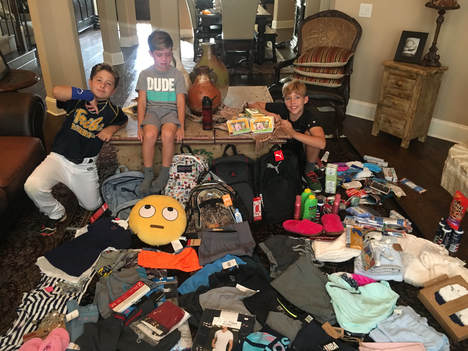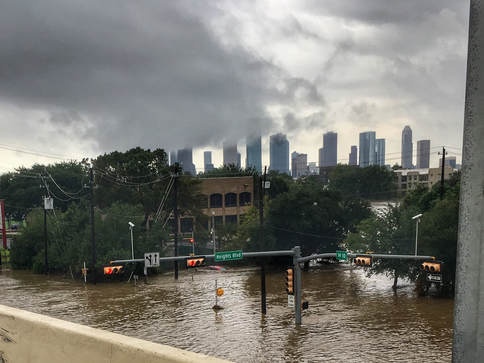Life is Amazing.Home, Travel, Hobbies, Fun
|
|
By Katie, Julie, and Monica
This is a list of tips from some folks who have managed emergencies in the past. For now, this has information specific to #HurricaneHarvey but generally can be applied to any disaster. #BeSomeone #HoustonStrong
1. People will need help for many months but most help will only be around right at first and then disappear. Continue to be available in a month and 6 months later! 2. Do not just show up at a shelter or a non-profit and expect someone who is managing a crisis to find something for you to do. Many of these foundations will have instructions or applications on their websites for volunteering. See an example here: Red Cross 3. Donate to local organizations that are working hard to help their neighbors. The giant organizations such as Red Cross and United Way will get many donations nationally but will not be around for the long haul.
4. Donate money. Money can be used to buy exactly what is needed by organizations to help their neighbors.
5. If you want to donate items, many organizations will make a wish list. They don’t need to wade through mountains of unwashed, used clothes and old stuffed animals. They are required to wash used items before distributing, and it is almost impossible to do when there is such a massive need, so donate NEW items (at least initially). Some organizations will make an Amazon Wish List, where items can be sent directly to them, which makes it easy for everyone! There are many items needed immediately in shelters, such as:
6. Nursing homes have needs as well
8. Don’t take pictures of yourself volunteering for your social media account. It’s not about you and you need to honor the privacy and dignity of others experiencing one of the worst moments of their lives. 9. Donate Blood! There is always a need, but especially in disasters. 10. The animal shelters will be overflowing after this. Volunteer to foster an animal or help at the local animal shelter. Consider donating as well! I have listed all the shelters in the area affected by Hurricane Harvey and included links for wish lists, donation portals, and websites/FB pages. Click here to check it out. 11. Consider donating straight to a cause you support. There will be people from all walks of life with homes and businesses that will require tons of work and support to rebuild. Do you love a particular sport? Find a team to sponsor. Have a fireman in the family? There will be many Volunteer Fire Departments who will be wiped out. Love animals? Help the local shelter (see #10)! The schools will need help recovering, too! 12. This is a great learning opportunity for kids. Helping others is an important life lesson, so get them involved! ***More resources on how to get and offer help specifically in Houston can be found atTexas Tribune.
A BIG thank you to Traci Maxwell of Wimberley, TX, Rebecca Howard of Sedalia, CO, and JJ Watt for being a fantastic role model and supporting your city.
0 Comments
By Katie, Julie, and Monica
My family and I have been through several floods and hurricanes over the years. I can share more on that later, but given the recent events with #HurricaneHarvey, I want to help you navigate through what will be a very difficult time in the coming weeks. Here are the things I wish I had known when we went through it the first time. I pulled this together from my own experience, other family and friends who have been through it, and multiple resources. #HoustonStrong
Safety First - Don’t go back to the site of the disaster unless you are cleared to do so. If there are barricades, it is likely for your safety. Don’t put the safety of emergency personnel in jeopardy because you are being impatient or are curious. If it is an emergency, talk to the officials to get help. First Calls to Make:
Be VERY wary about Flood Renovation companies. Ask a lot of questions, verify references, get everything in writing, and make sure you know what you're committing to. Some are legit but some are scams preying on desperate folks like you who have lost everything. Contact Local Organizations to see what resources might be available to you. Houston Hurricane Harvey flood victims: click here Insurance Claims - again, claim before Friday!
A little information about flood insurance from FEMA and Bankrate.
Clean up (General, Car, Property, Clothes, Leather) General
Car (From State Farm Vehicle Flood Damage Checklist)
Property (from floodsafety.com - more details can be found there)
Clothes (summarized from The Spruce - see their great site for more details on decontaminating your laundry room!)
Leather Shoes/Accessories (summarized from The Spruce - see their great site for more details!)
There are lots of people who want to help. Reach out and don't be afraid to ask. That's what Texans are all about.
A BIG thank you to the websites listed under each category, as well as Jamie Hornbuckle and Amy Hampton for their input from personal experience.
|




 RSS Feed
RSS Feed